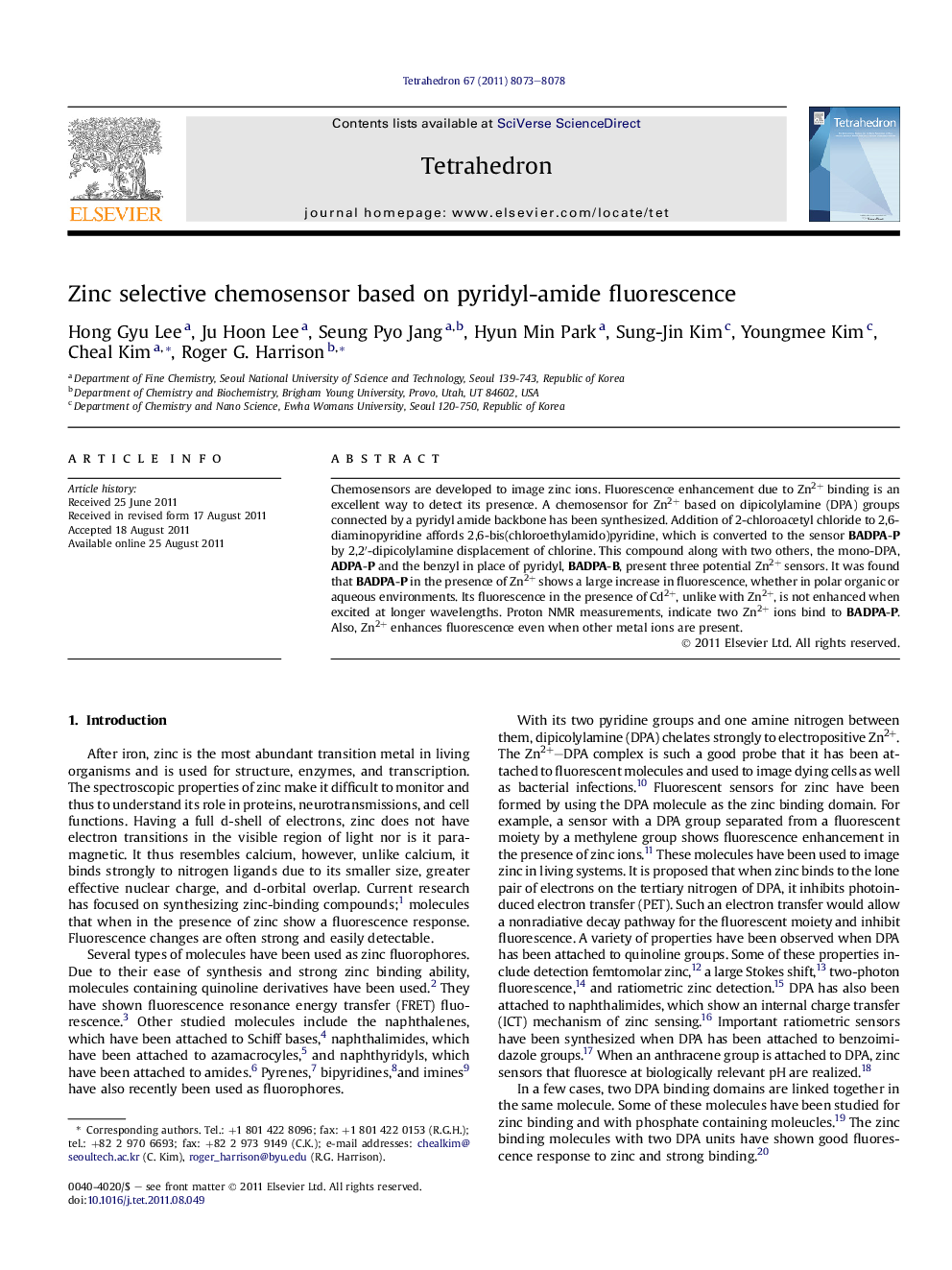| کد مقاله | کد نشریه | سال انتشار | مقاله انگلیسی | نسخه تمام متن |
|---|---|---|---|---|
| 5220485 | 1383389 | 2011 | 6 صفحه PDF | دانلود رایگان |

Chemosensors are developed to image zinc ions. Fluorescence enhancement due to Zn2+ binding is an excellent way to detect its presence. A chemosensor for Zn2+ based on dipicolylamine (DPA) groups connected by a pyridyl amide backbone has been synthesized. Addition of 2-chloroacetyl chloride to 2,6-diaminopyridine affords 2,6-bis(chloroethylamido)pyridine, which is converted to the sensor BADPA-P by 2,2′-dipicolylamine displacement of chlorine. This compound along with two others, the mono-DPA, ADPA-P and the benzyl in place of pyridyl, BADPA-B, present three potential Zn2+ sensors. It was found that BADPA-P in the presence of Zn2+ shows a large increase in fluorescence, whether in polar organic or aqueous environments. Its fluorescence in the presence of Cd2+, unlike with Zn2+, is not enhanced when excited at longer wavelengths. Proton NMR measurements, indicate two Zn2+ ions bind to BADPA-P. Also, Zn2+ enhances fluorescence even when other metal ions are present.
A DPA containing molecule fluoresces in the presence of Zn2+ and shows selectivity for Zn2+ over Cd2+ and other metal ions..Figure optionsDownload as PowerPoint slide
Journal: Tetrahedron - Volume 67, Issue 42, 21 October 2011, Pages 8073–8078